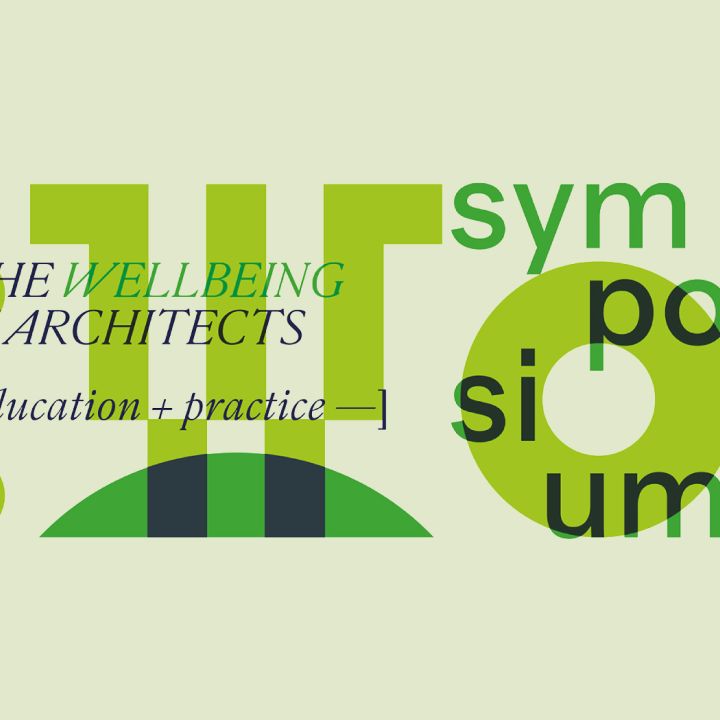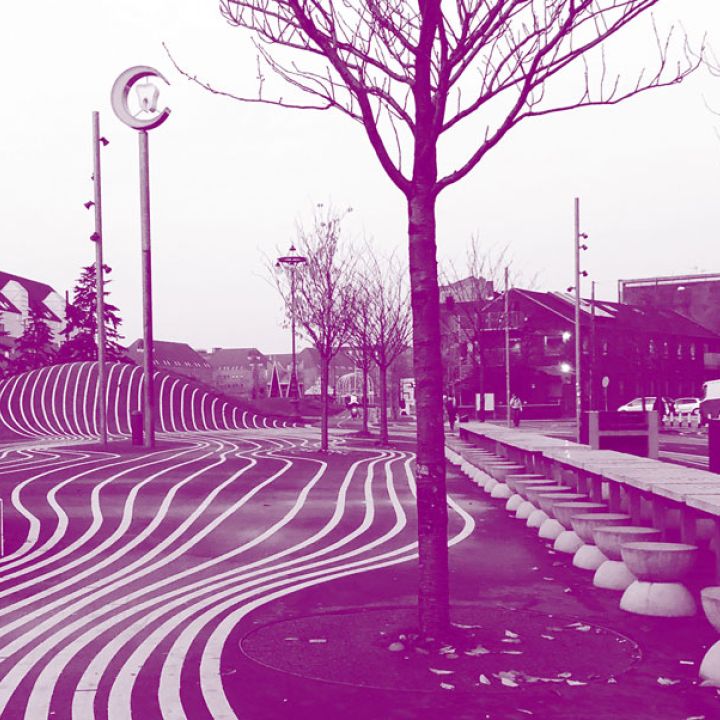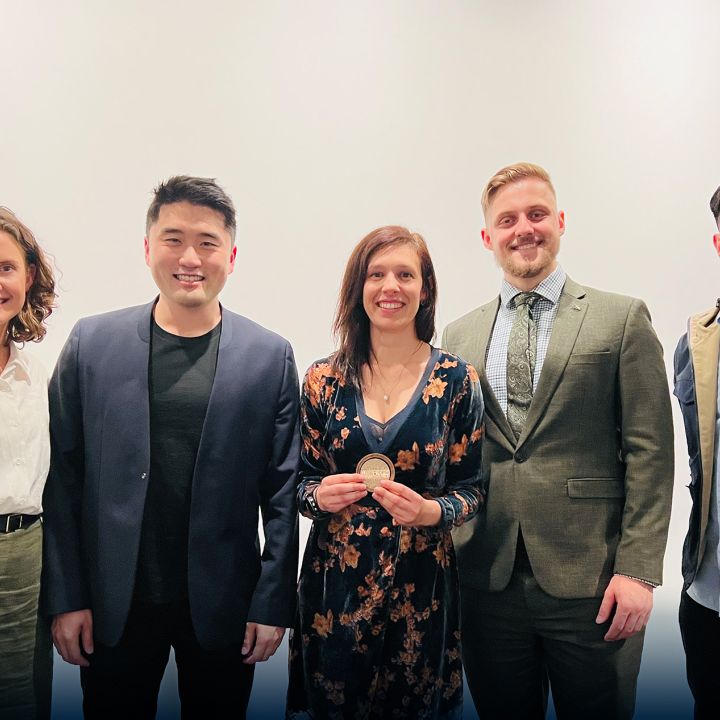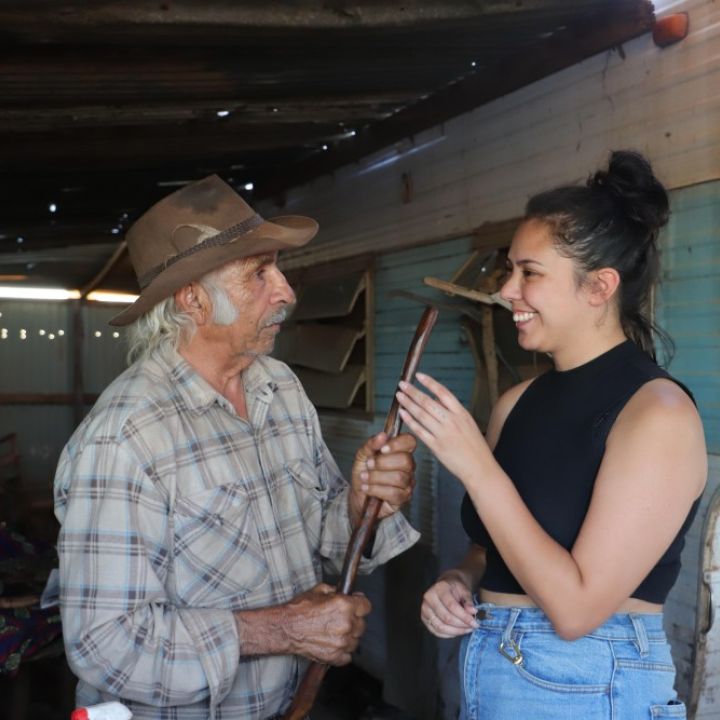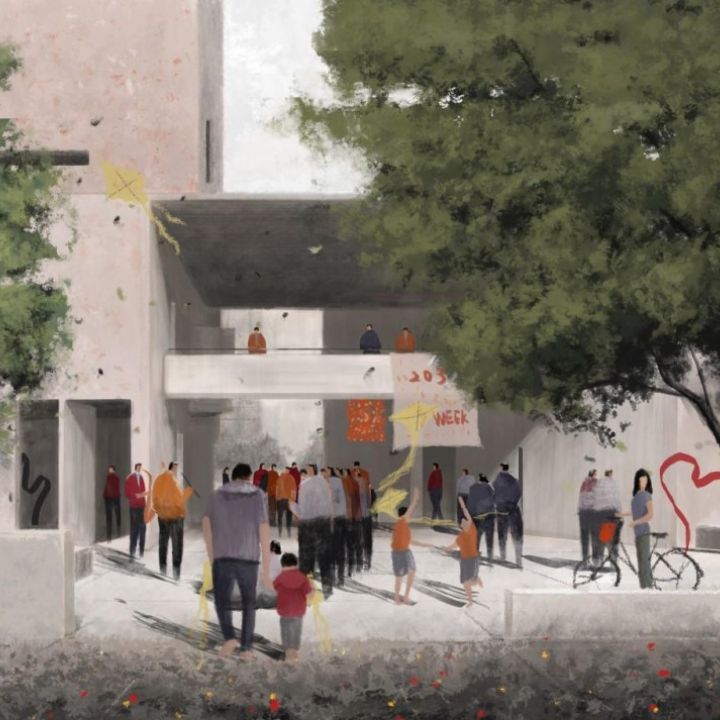
2020 Architects Medallion Winner: Jincheng Jiang
‘I think the most important architectural issue in New South Wales is turning our city from exclusive to inclusive.’
The NSW Architects Registration Board is thrilled to announce that the 2020 Architects Medallion has been awarded to Jincheng Jiang. The Board met with Jincheng to learn more about his process and values.
Jincheng is a graduate of the University of New South Wales, and was commended by the Board for the sensitive and inclusive approach to his work, expressed elegantly in his graduating project A Place to Share Hands.
“A place to share hands is a project to look for another way to communicate and connect with others beyond language itself,” Jiang said, “I think it’s an ongoing topic to discuss how to create a welcoming public space for everyone in the community, not only for the majority, but for the minority: for children, for elderly, for the pedestrian, for the disabled, also for refugees, for homeless – for everyone.”
Jincheng was awarded the custom-designed Medallion at a small ceremony hosted by the Board.
The Architects Medallion is awarded annually to a graduate of the Master of Architecture course from an accredited program in New South Wales, who has achieved distinction both in a particular subject area at final level and generally throughout the last two years of the course.
In 2020, the nominees were:
- Thomas Byard, The University of Newcastle
- Jincheng Jiang, The University of New South
- Gloria Ngoc Tran Ha, The University of Sydney
- Yvette Salmon, The University of Technology Sydney
Jury Citation for Jincheng Jiang
The Jury was impressed by the project that Jincheng submitted –titled “A Place to Share Our Hands Together”.
Jincheng’s project explores the creation of community through architectural and urban interventions that are designed to overcome various barriers including culture, language, ethnicity, age, and physical ability. At the heart is an investigation of how social interaction can be built between people from diverse backgrounds.
This was clearly a very personal project for Jincheng – who arrived in Australia 8 years ago as an international student. In the interview, Jincheng spoke of the language barriers he has had to overcome and his discovery of the importance of the hands in their ability to gesture for clearer communication, their ability to draw and to make things.
Jincheng’s proposal is an exploration of how observation of the hands – observation of their movements and activities - can help people to connect with others and can create a shared culture at the scale of an urban precinct. His proposal features various unexpected and opportunistic views into buildings without the possibility of direct eye contact – forcing a focus on stolen glimpses and framed views of peoples’ hands at work and in motion.
His project presents a concept that is both meaningful and poetic. It is illustrated with exquisite hand drawn renders. In this regard, the jury was impressed by Jincheng’s approaches to hand drawing as an explorative tool and a way of thinking, which reflects the influence of two of his teachers – Renzo Piano and Glenn Murcutt.
But the jury was most impressed by the maturity of Jincheng’s approach to putting people first in design, which as he explained in the interview means that you actually have to communicate with them. Jincheng explained his belief that what your hand produces is actually more convincing than what you say and can provide the basis for mutual understanding to the extent that sometimes you don’t need to say anything at all, but simply let the drawings do the talking. The Jury thought Jincheng brought a unique cultural perspective to his architectural approach, showed a clear enthusiasm for learning, had a sophisticated understanding of structure and material, but at the same time was deeply immersed in the experience of the spaces he was trying to create than about the physicality of the building itself.
The jury congratulates Jincheng.
- Last updated on .











